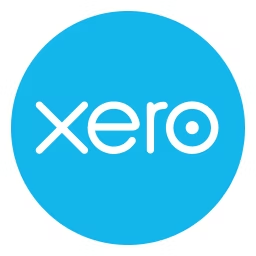In this report, we define and compare inventory control and inventory management software to help you decide which one aligns with your business goals.
Managing inventory is a challenging proposition. As a warehouse or operations manager, you must consistently deal with several challenges, such as limited inventory visibility, obsolete material tracking, and insufficient order management. All these issues, in the absence of a standardized procedure, can often lead to damaged inventories, loss of profits, and low customer satisfaction. If you grapple with any of these issues at work yourself, maybe it is time to invest in a modern inventory solution, such as inventory control or inventory management software.
Inventory control software, also known as stock control software, and inventory management software are often confused with one another since both these tools allow inventory managers to track their products and maintain an optimal supply. Despite serving similar purposes, both these tools are different in functionalities. While an inventory control system is used to regulate inventory levels and movement within warehouses, inventory management software covers demand forecasting, order management, and product categorization as well.
Below, we'll talk about the similarities and differences between the two software categories to help you understand which one is better suited for your business’s needs.
What is inventory control software?
Inventory control software automates the management and tracking of goods. The software enables businesses to manage their existing inventory levels located at the company warehouse or other locations. It helps retailers monitor the movement, usage, and storage of goods to ensure that they are maintaining an optimal level of each product.
Inventory control systems also allow sales and order management teams to track purchase orders and identify slow-moving inventory.
Key features of inventory control software
The primary features of inventory control software include:
Alerts/notifications: Offers email/SMS alerts in case of low stock, dead stock, stock-out, and other such important updates.
Barcoding/RFID: Identifies and tracks physical inventory using barcode or RFID tags.
Check-in/check-out: Tracks the status of assets whenever they are checked in or out of the premises.
Inventory optimization: Helps maintain optimal inventory levels to meet business requirements and prevent stock-outs.
Inventory tracking: Monitors the movement and quantities of inventory items.
Item management: Collects, organizes, and tracks inventory/product data, including item numbers and descriptions.
Reorder management: Enables users to replenish products based on inventory levels and business requirements.
Reporting/analytics: Helps scrutinize every aspect of inventory by providing necessary reports, such as inventory levels, sales, and inventory-value reports.
Examples of inventory control software
These five products, listed in alphabetical order, are taken from Capterra’s Shortlist report 2022 for inventory control software. (See the end of this piece for the full methodology for how these products were chosen.)
Trial/Free Version
- Free Trial
- Free Version
Device compatibility
Trial/Free Version
- Free Trial
- Free Version
Device compatibility
Trial/Free Version
- Free Trial
- Free Version
Device compatibility
Trial/Free Version
- Free Trial
- Free Version
Device compatibility
Trial/Free Version
- Free Trial
- Free Version
Device compatibility
What is inventory management software?
Inventory management software enables businesses to track and manage inventory details, locations, and levels. The software grants users visibility into their stock and automates important aspects of inventory and warehouse management, such as generating documents for work orders, shipping, invoicing, and producing inventory reports to facilitate forecasting decisions.
An inventory management system enables businesses to maintain optimum inventory levels to ensure uninterrupted sales and high customer satisfaction. Several inventory management tools also offer barcoding to track inventory movement.
Key features of inventory management software
The primary features of inventory management software include:
Alerts/notifications: Sends email and text message alerts in case of low inventory levels.
Cost tracking: Records and monitors the costs associated with inventory, including the budget for assets, equipment costs, and revenue.
Forecasting: Helps predict future inventory requirements based on historical sales and usage data.
Inventory auditing: Runs periodic inventory counts and sends alerts in case of any process lapses or discrepancies.
Inventory management: Manages and tracks inventory to maintain an adequate supply for meeting customer service and revenue goals. Helps avoid overstocking and understocking of products.
Order management: Organizes, tracks, and monitors customer orders.
Product identification: Identifies products by using barcodes or serial numbers attached to the items.
Purchase order management: Creates, sends, and tracks purchase orders and their statuses.
Reorder management: Offers automated reordering, which means that you simply set your required minimum quantities for each product, and once a product reaches that level, the software automatically generates purchase orders to refill your stock.
Reporting/analytics: Generates accurate inventory reports, such as inventory performance, movement analysis, and inventory level reports.
Search/filter: Searches for available company resources, including customer records and inventory at all locations, for required information.
Shipping management: Organizes and tracks orders being sent and delivered to customers.
Supplier management: Manages various aspects of supplier relationships, including transactions and order history, via an online portal.
Examples of inventory management software
These five products, listed in alphabetical order, are taken from Capterra’s Shortlist report 2022 for inventory management software. (See the end of this piece for the full methodology for how these products were chosen.)
Trial/Free Version
- Free Trial
- Free Version
Device compatibility
Trial/Free Version
- Free Trial
- Free Version
Device compatibility
Trial/Free Version
- Free Trial
- Free Version
Device compatibility
Trial/Free Version
- Free Trial
- Free Version
Device compatibility
Trial/Free Version
- Free Trial
- Free Version
Device compatibility
What do they have in common?
Both inventory control and inventory management systems go hand in hand in monitoring inventory operations. While inventory control is a part of inventory management, the two solutions have a lot in common. For instance, both these tools:
are used to monitor and track inventory movement, usage, and supplies.
can integrate with your enterprise resource planning (ERP), supply chain, and warehouse software systems to improve the overall inventory and warehouse management processes.
Which tool is right for your business?
As compared to inventory control, inventory management tools offer a wider range of functionalities, including demand forecasting, stock replenishment, and inventory maintenance. Therefore, if you need a system that simply helps you track and regulate existing inventory across multiple locations, an inventory control system would work for you. But, if you are looking for a tool that allows you to manage broader aspects, such as demand planning, forecasting, and vendor management, then you must invest in an inventory management solution.
Once you’ve decided which software to use, head to our inventory control software and inventory management software category pages, where you can find a sortable list of products and software reviews from verified users.
If you want to narrow down your search to only the most popular and highest-rated solutions, visit Capterra Shortlist reports for the top inventory control software and inventory management software solutions—our reports are based on an analysis of thousands of user reviews.
How to choose the right inventory tool for your business?
Inventory control and inventory management software allow businesses to manage their inventories and maintain optimal inventory levels. Here are a few factors that you can consider before finalizing the best inventory management system for your business.
Assess your business requirements: Before shortlisting products to manage your inventory, you must examine your inventory management processes and goals. For instance, you may want a solution that allows you to track incoming and outgoing products accurately, or you may require a system that provides you complete visibility over your existing stock and provide inventory alerts. Similarly, you may also want to consider a product that offers a barcoding feature to identify inventory, a batch-tracking feature, or workflow management.
Consider the frequency of use: Inventory management tools can be classified based on how often you need to track inventory. Based on the frequency, inventory management tools can be classified as periodic inventory management and perpetual inventory management systems. In case you wish to track inventory continually, you must invest in a perpetual inventory system, but if you want to track your inventory on a weekly, monthly, or quarterly basis, a periodic inventory management tool would be an ideal choice for you.
Consider the software price: In general, inventory tracking solutions are cloud-based tools for which you need to pay a monthly or an annual fee. While some vendors charge a one-time licensing fee, others offer free versions as well with limited functionalities. Some of the key factors that determine the cost of an inventory software solution include the size of your business, the number of users that require access to the system, the volume of inventory, and the number of purchase orders you receive.
Common questions to ask while selecting an inventory tool for your business
Selecting the right inventory solution starts with asking software providers the right questions. Here is a list of some of the common questions that you can ask vendors before investing in a tool.
Does the software provide important inventory alerts?
Before you finalize the best inventory tool for your business, make sure that it offers automated email or text message alerts to inform you about any noteworthy changes in your inventory. These might include low inventory levels, overstocking of products, new shipments, slow-moving stock, and supply chain delays.
Does the software offer reporting capabilities?
Analytics plays a critical role in forecasting and preventing inventory shortages. An efficient inventory management system should be able to generate important inventory reports, such as purchase orders, inventory performance, stock levels, sales, and inventory discrepancy reports.
What are the available integration options?
Ideally, a stock control/management system should integrate with warehouse management, accounting, purchasing, and eCommerce solutions. Before investing in an inventory tool, make sure to ask the vendor about all the available integrations that can help streamline your business processes.







